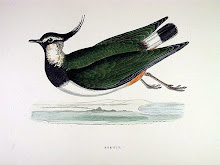
A strange and unsettling thing happened yesterday. I was walking through a park listening to music when, in the very gap between one song and the next, I heard a curious sound along the lines of 'chook...weeeeeeeeee'. Looking around for an unfamiliar wing, I stepped off the path and into the surrounding woodland. Some bluetits were hanging out on a branch in their upside down bluetit way, but I know what bluetits sound like, and it sure isn't 'chook...weeeeeeeeeeeee'. The only other animate creature I could see was a squirrel. I glared at him in a friendly sort of way and he glared back... and then I noticed that every time I heard the 'chook...weeeeeeeee' sound, his mouth moved. In short, here was a squirrel singing like a bird.
In the thirty-six hours since this happened, I have come up with some possible explanations.
1. This was a Mowgli-squirrel, raised by birds and thinking that he himself is a bird.
2. Hidden in the tree's highest branches was a ventriloquist bird, and I had been fooled by his squirrel dummy.
3. The bird (singing) and the squirrel (miming) were in league together to trick naive passers-by.
4. This actually was some new hybrid squirrel-bird species. Given that we already have flying squirrels, the development of singing squirrels seems not improbable.
5. I saw a bird trapped in a squirrel's body. A bit like the frog prince.
It's hard to know which of the above possibilities is the most concerning. All of them leave T.W.W. in a very difficult position. If squirrels become birds or birds squirrels, how are we to know who is friend and who foe? If squirrels are wingless birds, do we shun them or do we welcome them with open, um, wings? And how widespread is this squirrel-bird chaos? Did I witness an isolated incident or are there squirrds all over the place? T.W.W. requests that all its members keep on the alert and report any suspicious sightings immediately. Over and out.























